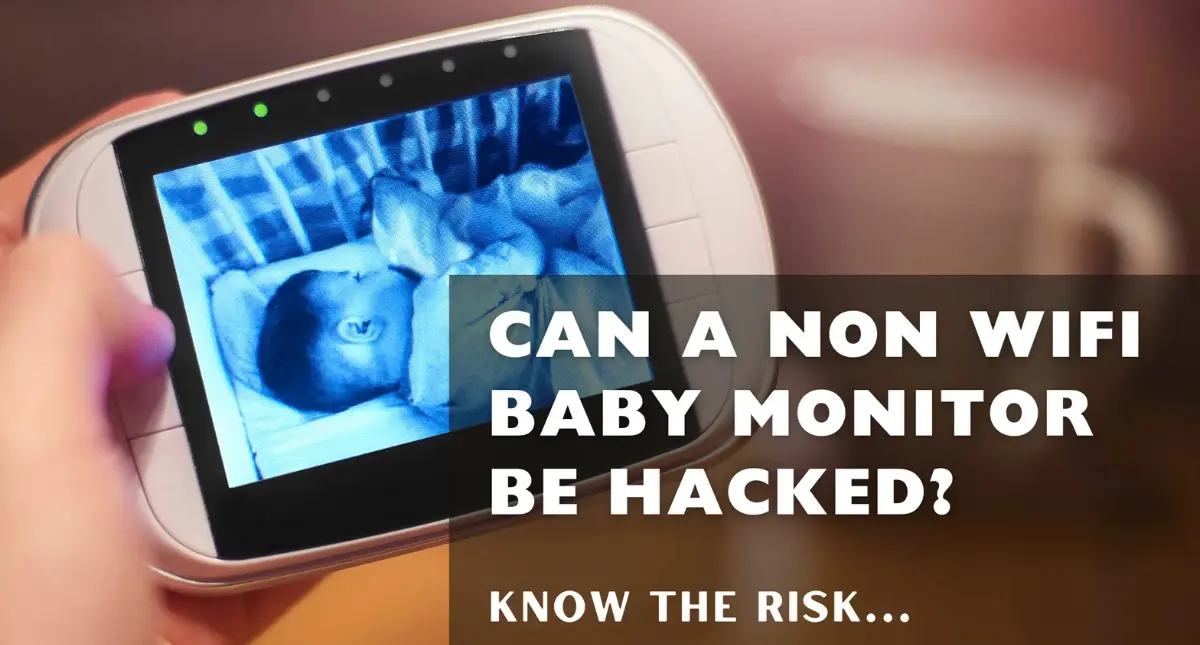Baby monitors give parents peace of mind in today’s connected world by allowing you to check on your child without surreptitiously entering the nursery. “Can a Non WiFi Baby Monitor Be Hacked?” is a question that is commonly asked in light of the growing concerns about online privacy.
In summary, yes, but much less often than with WiFi-enabled models. Even unconnected devices have vulnerabilities, albeit with a more limited scope.
Table of Contents
This blog post will explain how non-WiFi monitors work, the risks involved, and simple safety measures you can take to protect your family’s privacy.
Understanding How Baby Monitors Without WiFi Work
Analog or radio frequency (RF) monitors, also known as non-WiFi baby monitors, use closed, direct signal transmission to send audio and video from the baby’s room to a receiver.
Because they don’t use cloud-based apps or connect to the internet, they are by nature a safer choice in terms of cybersecurity.
Can a Non WiFi Baby Monitor Be Hacked?
In theory, yes, but it’s uncommon. These monitors send out signals using radio frequencies (usually 49 MHz, 900 MHz, or 2.4 GHz), which someone nearby with the right equipment may be able to intercept.
How it works: If the hacker is within signal range (usually 150–1,000 feet), they may be able to eavesdrop using a simple radio scanner or baby monitor set to the same frequency.
However, unlike WiFi-based monitors, they are unable to remotely hack in via the internet.
Although the question of whether a non-WiFi baby monitor can be compromised is legitimate, the truth is that it would require a very close physical presence and intent, making it much less dangerous for the majority of families.
How to Prevent Hacking on Your Non-WiFi Baby Monitor
Here are a few easy, practical security measures to consider if you’re still worried
- Select a Monitor with a Digital Signal Encrypted
FHSS (Frequency Hopping Spread Spectrum) technology is what you should look for in digital monitors. The fast frequency changes make it more difficult to intercept signals.
- Maintain Locality
Use your monitor within a safe range; keep the receiver away from open doors or windows as this may cause the signal to reach undesirable places.
- Steer clear of used monitors
The signal encryption that modern models have may not be present in older models. When in doubt, steer clear of out-of-date technology and only use reliable brands.
- When not in use, turn off
Although it may seem easy, shutting off the monitor when not in use completely minimizes its window of vulnerability.
The Reasons Some Parents Continue to Prefer Baby Monitors Without WiFi
For peace of mind, many parents are opting to go low-tech even though smart monitors with cloud access and phone apps are convenient. Baby monitors without WiFi include
- By default, more secure
- Remote hacking is less likely to occur.
- Easy to set up without any accounts or apps
- Excellent for tech-averse households or grandparents.
It’s likely that you’re asking, “Can a non WiFi baby monitor be hacked?” because you’re concerned about your children’s digital safety being smart parent.
Conclusion: Is There a Risk
Can a non WiFi baby monitor be hacked? Yes, technically, but it’s highly unlikely, particularly when using a contemporary digital monitor that uses encrypted signals.
Select a monitor that is not Wi-Fi, employs digital encryption, and is kept within a secure range of your house if you want the highest level of privacy. Even though no gadget is impenetrable, non-WiFi monitors are still among the safest choices for families trying to reduce their children’s exposure to technology and their vulnerability online. Explore our Newborn Care for helpful tips and essential guidance.
It all comes down to striking the correct balance between convenience, safety, and mental tranquilly.
